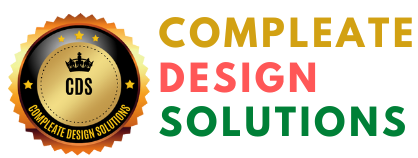Online Frontend stack develope
Introduction to Web Development and the Internet: Understanding the basics of how the internet works, client-server architecture, browsers, and HTTP/HTTPS. HTML (HyperText Markup Language): Structuring web page content using elements like headings, paragraphs, lists, images, and semantic HTML for better accessibility and SEO. CSS (Cascading Style Sheets): Styling web pages with properties for layout, colors, fonts, backgrounds, and responsive design techniques like Flexbox, Grid, and Media Queries. JavaScript: Adding interactivity and dynamic features to web pages, including variables, data types, operators, functions, control flow statements, and DOM manipulation. II. Core Frontend Development Skills Advanced JavaScript (ES6+): Mastering modern JavaScript features like arrow functions, destructuring, template literals, modules, Promises, and async/await. Version Control (Git and GitHub): Tracking code changes, collaborating with teams, and managing code repositories. Frontend Frameworks and Libraries: Learning popular frameworks like React.js, Angular, or Vue.js for building complex and scalable applications. CSS Preprocessors (Sass/Less): Using variables, nested rules, mixins, and other features to write more organized and maintainable CSS. Responsive Web Design: Implementing designs that adapt seamlessly to various devices and screen sizes using techniques like flexible grids and fluid images. User Interface (UI) Design Principles: Understanding the fundamentals of designing intuitive and user-friendly interfaces. Web Accessibility (A11Y): Building websites that are usable by everyone, including individuals with disabilities, and adhering to standards like WCAG. Performance Optimization: Optimizing images and assets, leveraging browser caching, lazy loading, minification, and using CDNs for faster load times and smoother user experiences. III. Emerging and Advanced Topics TypeScript: Enhancing JavaScript with static typing for better code quality and maintainability, especially in large-scale projects. Build Tools (Webpack, Parcel, Vite): Automating tasks like code bundling, transpilation, and optimization for efficient development workflows. API Integration: Consuming RESTful and GraphQL APIs to interact with backend services and fetch data. Testing and Debugging: Implementing unit, integration, and end-to-end testing with frameworks like Jest, Mocha, and Cypress, and mastering debugging techniques. Server-Side Rendering (SSR) and Static Site Generation (SSG): Improving performance and SEO by pre-rendering applications on the server or generating static HTML at build time. Progressive Web Apps (PWAs): Building web applications that offer a native app-like experience, including offline functionality and push notifications. Micro Frontends: Decomposing monolithic frontend applications into smaller, independent micro-apps for better scalability and collaboration. AI/ML Integration (Optional): Incorporating AI-powered features like chatbots and recommendation systems using libraries like TensorFlow.js or ml5.js. IV. Professional Development and Best Practices Continuous Learning: Staying updated with industry trends, new technologies, and best practices in the rapidly evolving field of frontend development. Problem-Solving Skills: Analyzing issues, developing effective solutions, and implementing innovative designs. Communication and Teamwork: Collaborating effectively with designers, backend developers, and clients. Building a Portfolio: Showcasing completed projects and skills to demonstrate expertise to potential employers. Interview Preparation: Preparing for technical interviews by reviewing core concepts, practicing coding challenges, and understanding common interview questions. This syllabus provides a comprehensive overview of the skills and knowledge required to become a successful frontend developer, ranging from foundational concepts to advanced frameworks and emerging technologies. The specific emphasis on certain topics may vary depending on the target role or industry, but this roadmap covers the core competencies generally expected in the field. AI responses may include mistakes. Learn more
COMPUTER